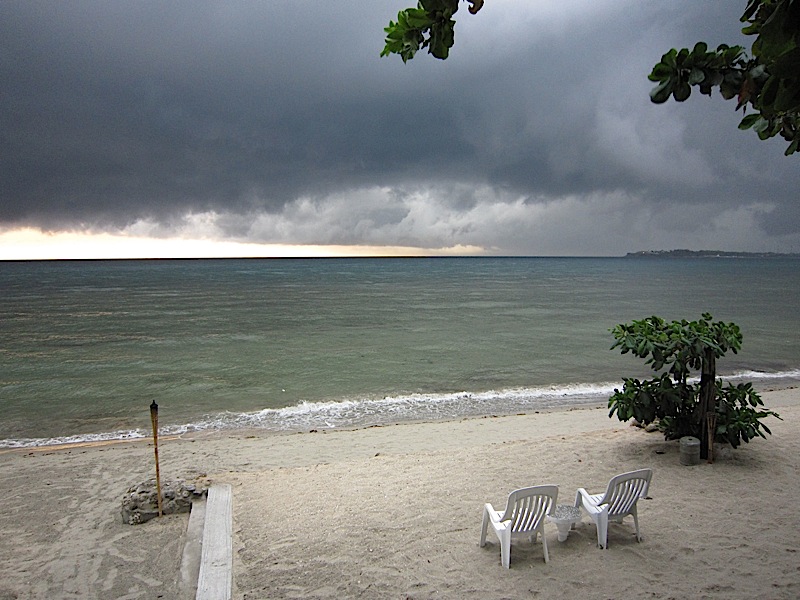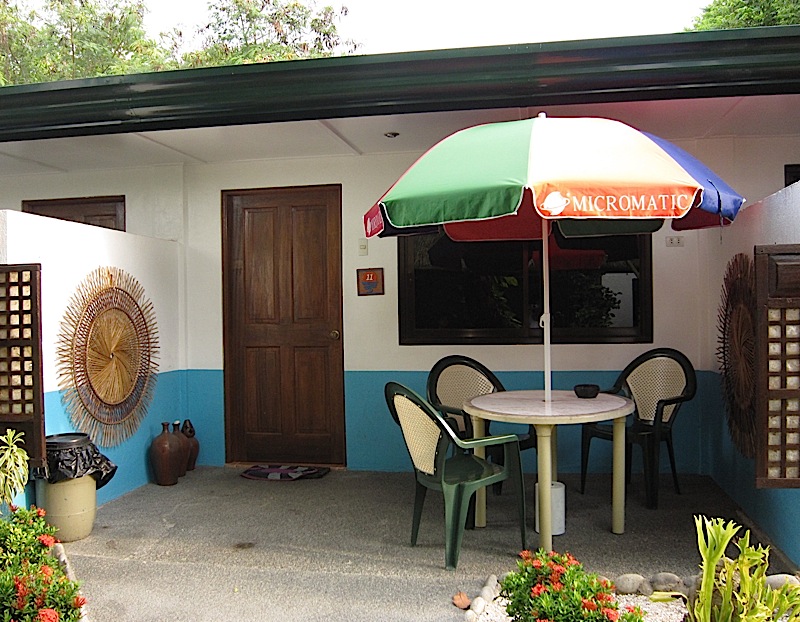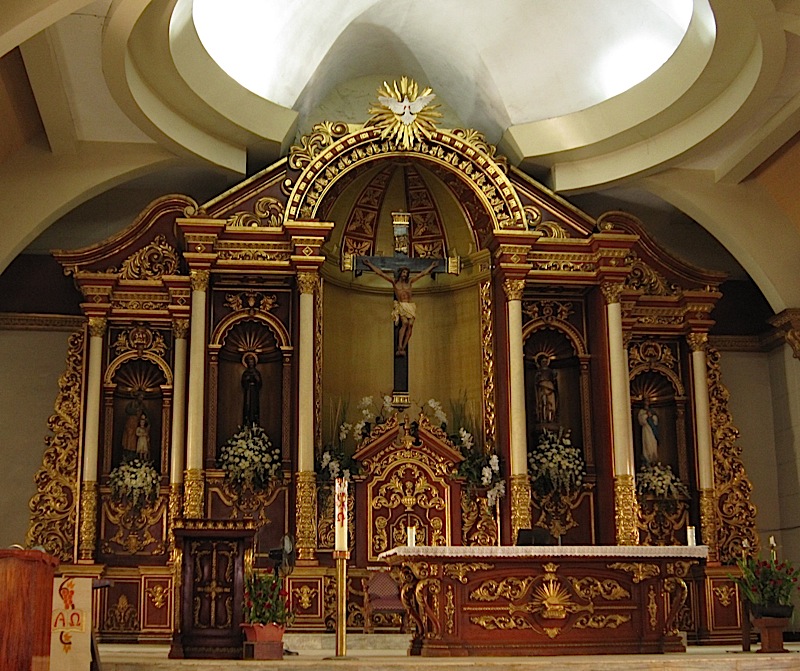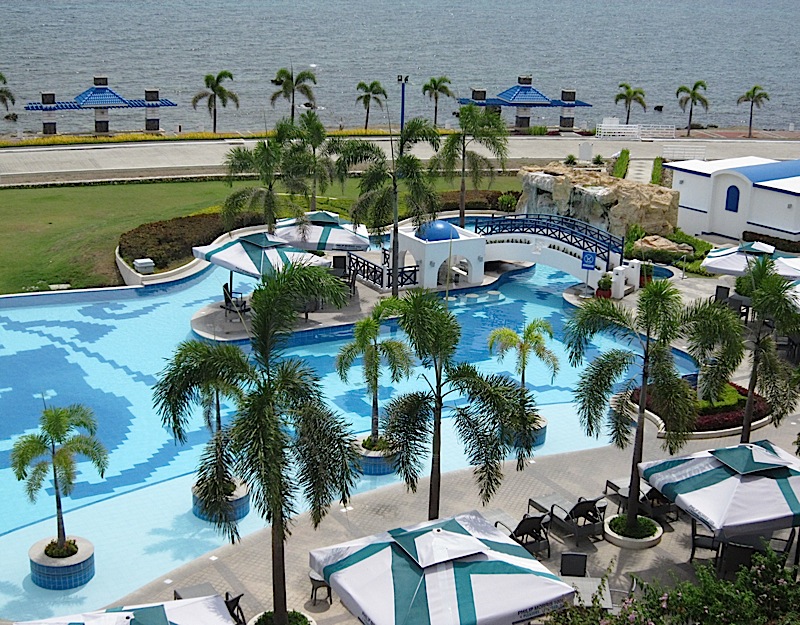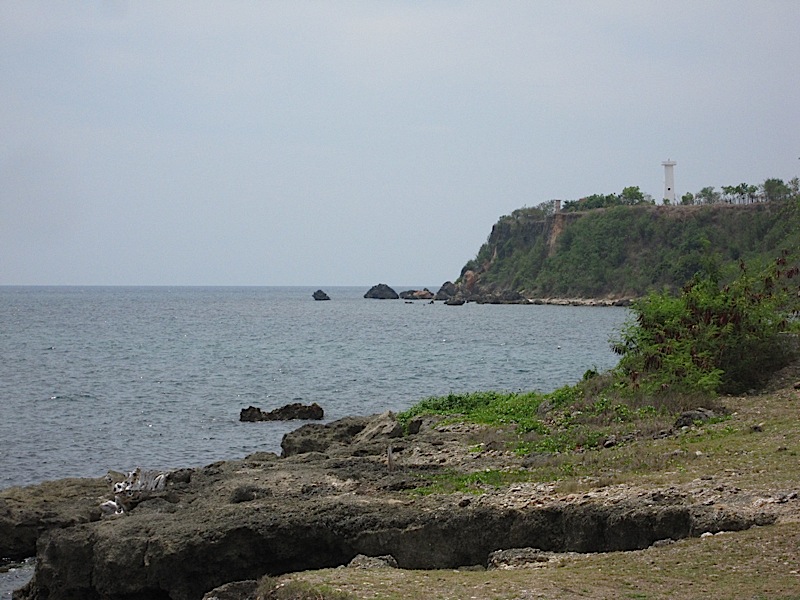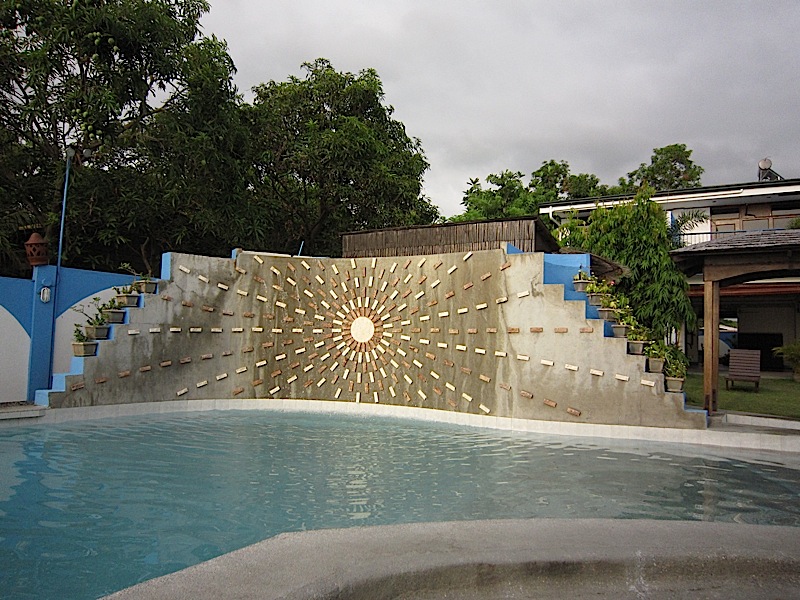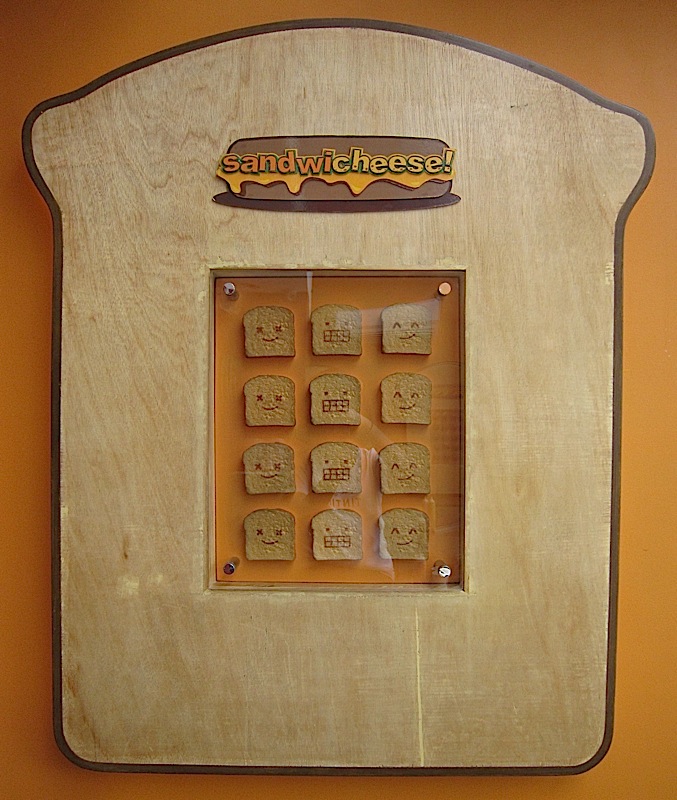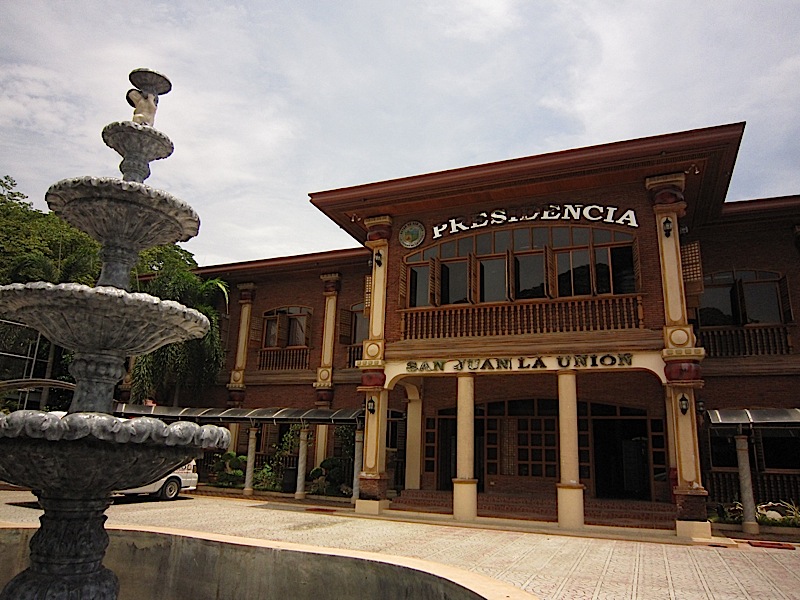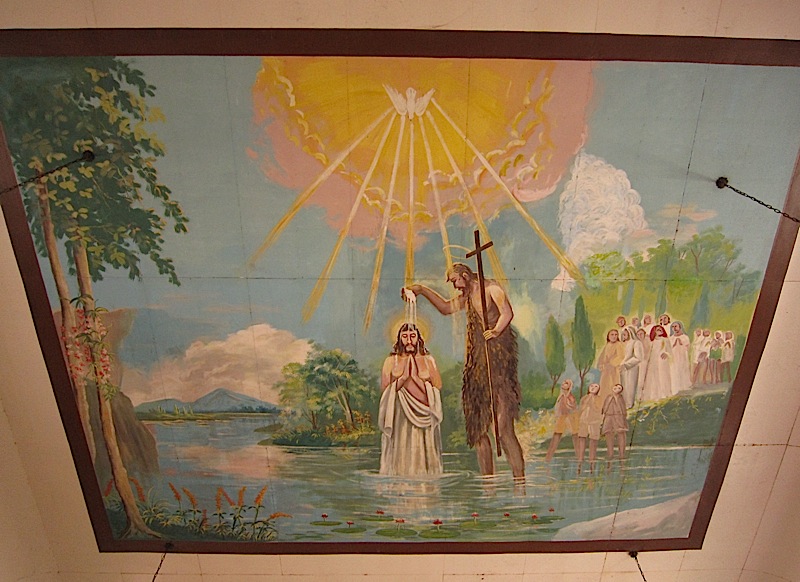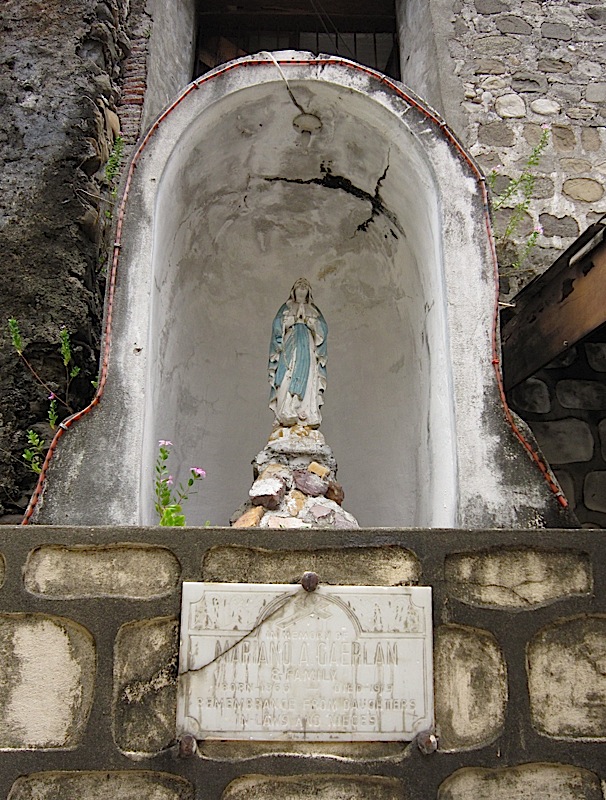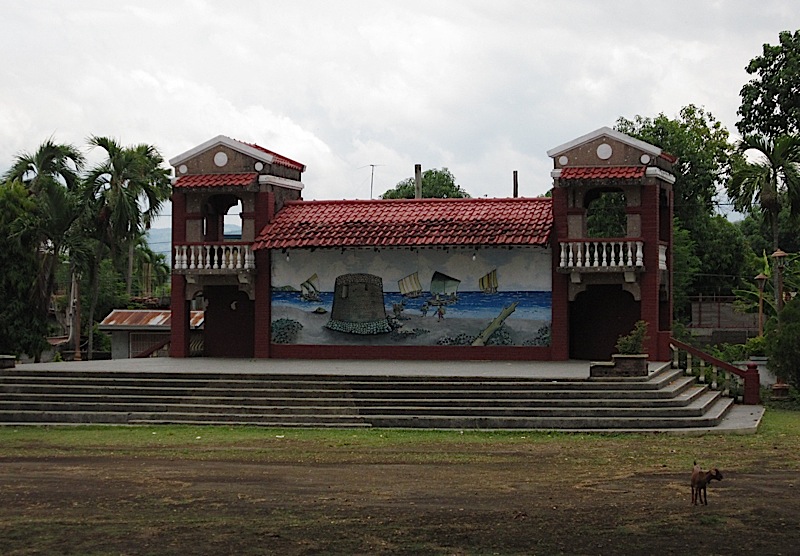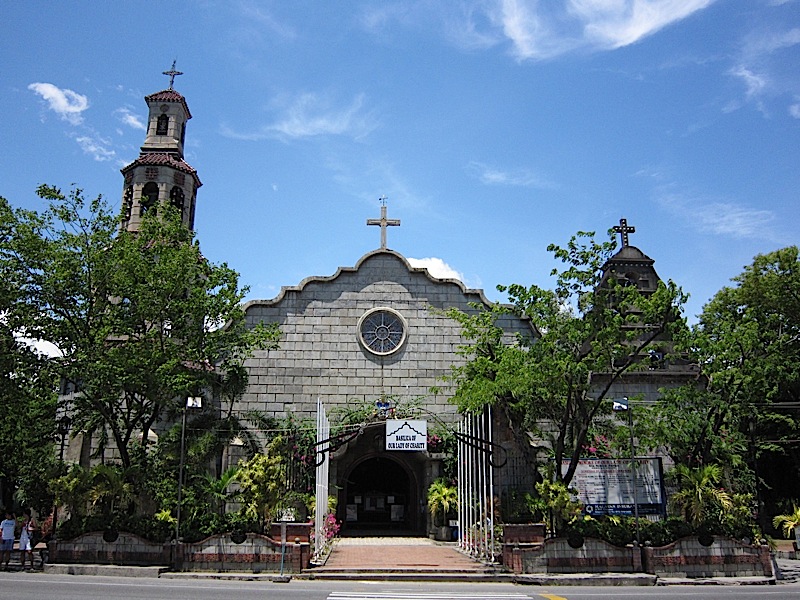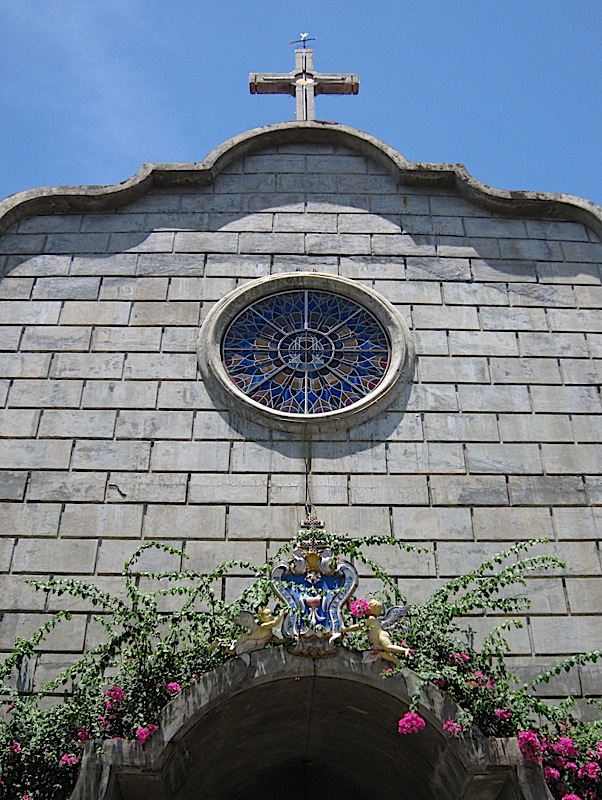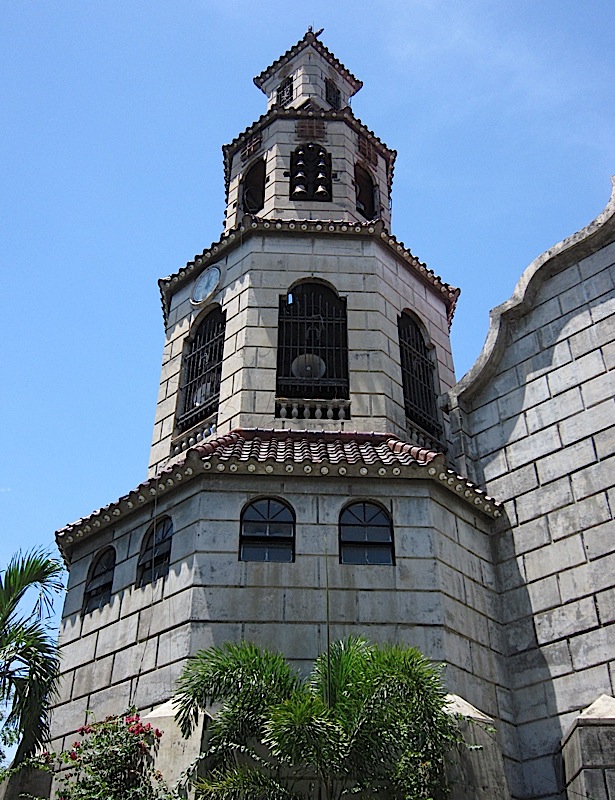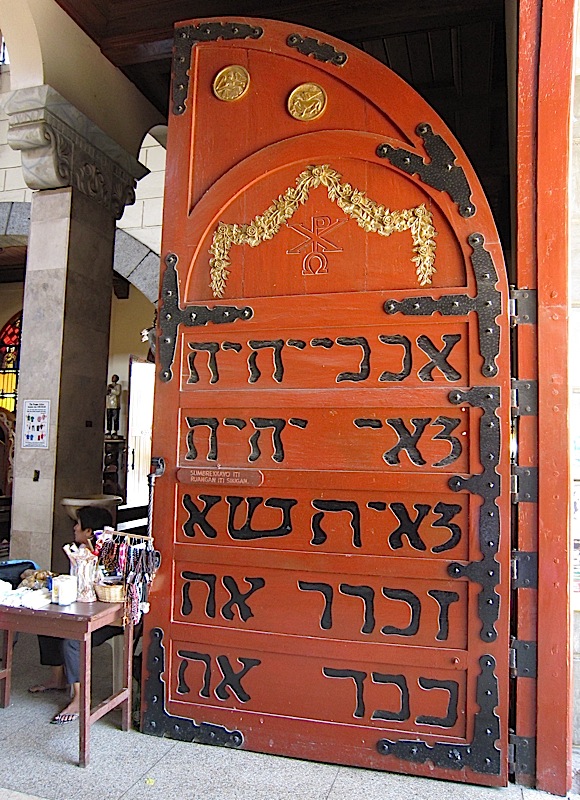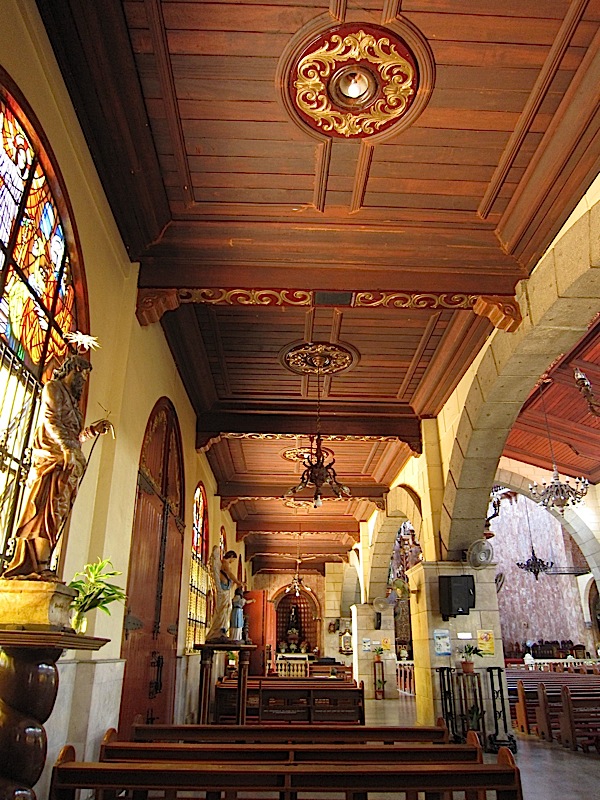From May 12 to 24, my husband and I went on a road trip through the
Central Luzon and
Ilocos Regions, stopping at cities and towns that we've never visited before. My Manila goes outside Metro Manila for the next few days. I hope you enjoy the trip.
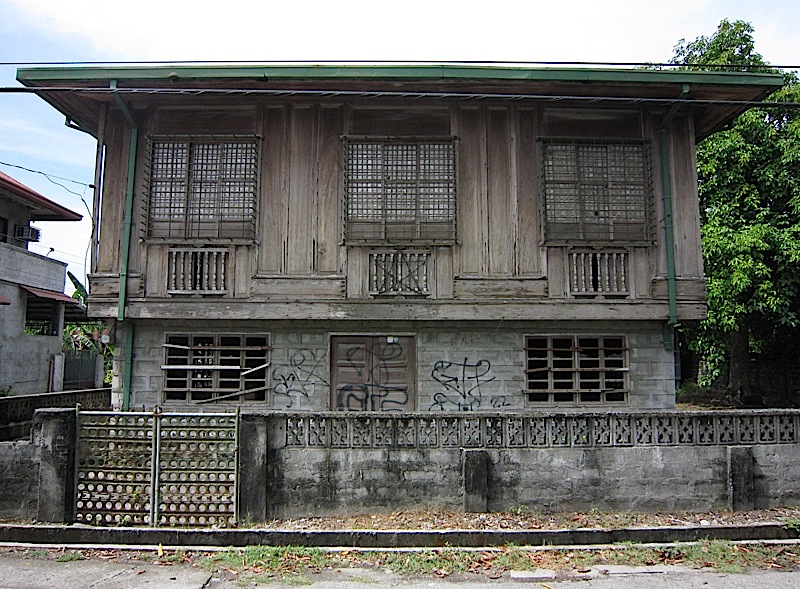
My husband and I spent two days in the province of
La Union. One of the reasons for that was personal—he wanted to visit the town of
Bacnotan, where his mother's family originally was from. He remembers visiting Bacnotan, 243 kilometers northwest of Metro Manila, a few times when he and his siblings were little children and just walking to the beach from the house. We found the house thanks to a map that his mother had drawn for him. Sadly, it is in a very bad state.

All but one of my mother-in-law's family moved to Metro Manila or the U.S. a long time ago and the brother who stayed behind passed away several years ago. Since then, no one has taken care of the property. In the spacious yard, we saw the well where, my husband recalls, their bath water was drawn from.
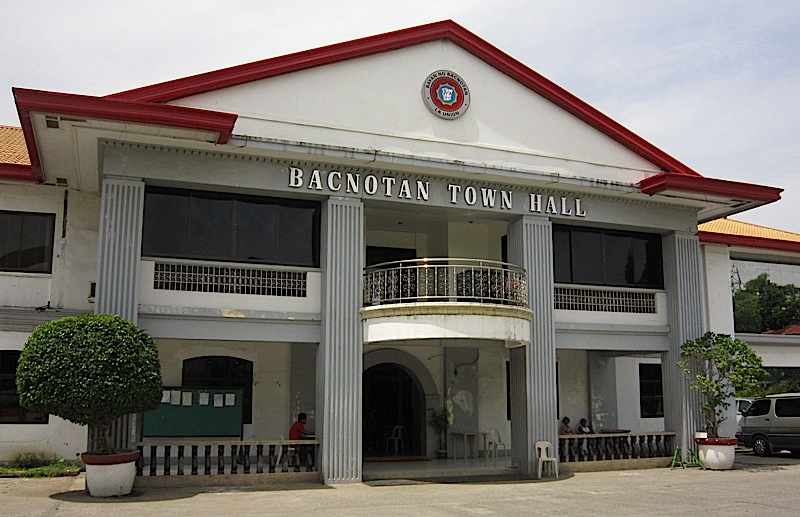
After visiting the house, we decided to walk around the vicinity and discovered that the town hall was just a few blocks away. A very young-looking town hall, considering the fact that Bacnotan was formally founded in 1599.

The Catholic parish of Bacnotan has existed since 1787, but the original church constructed by the Spanish was completely destroyed in a fire in 1877. The church was rebuilt in 1888–91 and, according to the plaque at the church entrance, was repaired in 1937. For that information to be included in the plaque, I assume that the damage was quite heavy; the plaque, however, does not state why the church needed major repairs. But Bacnotan was a setting for one of the many battles of the
Spanish-American War at the turn of the 20th century, so it may be correct to guess that the church was damaged then.

The complete name of the church is Saint Michael the Archangel Catholic Church, and there is a poorly rendered statue of the archangel in front of the church. Whoever painted it couldn't even distinguish the snake from the rock it was on and painted them the same red color.

The big bronze church bell, green with age, lies under an ivied trellis in the churchyard.

Without a guide—then and right now on the web—it is is difficult for me to say anything with precision about the church other than the dates that are written on the plaque; I can only make guesses based on observation. And it seems to me that the 19th century church was made of red bricks, and the 1937 repair and reconstruction used marble and other stone blocks. Note the stained glass window here which depicts Mary carrying the infant Jesus with a dove representing the Holy Spirit—we will get back to it at the end of this post.

In many parts of the church, the bricks have been reinforced by concrete.
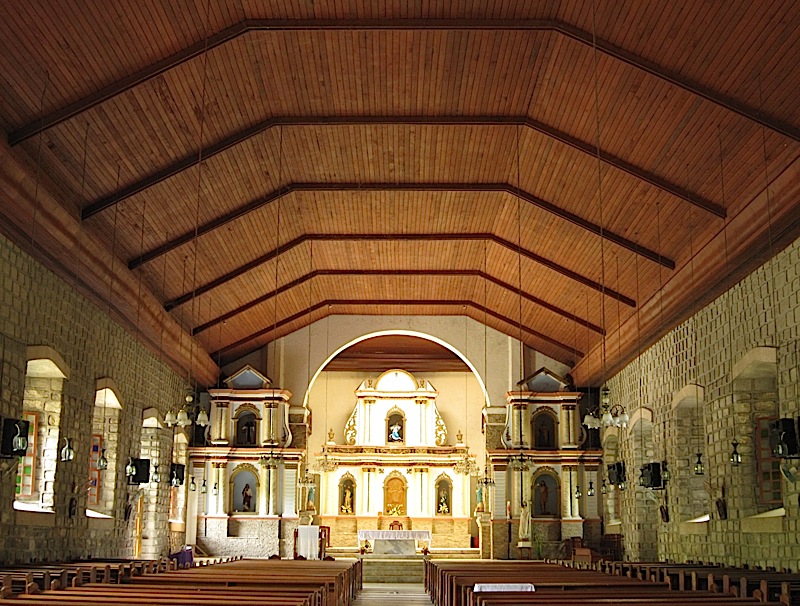
The exterior of the church may be a mix of 1891 and 1937 construction, but the interior of the church looks much, much newer than 1937. Like the
Agoo Basilica, the ceiling is made of wood, but the Church of Saint Michael the Archangel is simpler. No arched aisles, no
transept even, which I find unusual for a 19th century church. I have to admit, I find the simplicity of the ceiling and walls soothing. The
retablo (
reredos) behind the altar and the two similarly-designed
iconostasis flanking the sanctuary are the most ornate items inside the church.

But even the retablo is simple compared to those of other churches in the country, having only three niches aside from the
tabernacle. In the topmost niche is an icon of
Saint Michael the Archangel, the patron saint of the parish.

The stained glass window over the church's main doors depicts the
Descent of the Holy Spirit upon Mary and the remaining eleven of Jesus' apostles, described in the Acts of the Apostles 1:12-14 and 2:1-8.

Now we get back to the stained glass window on the church's facade. My husband and I discovered that there is a second one behind it, which can only be seen from the loft inside the church. It depicts Saint Michael the Archangel slaying the devil, not just a snake which symbolizes him—a much more powerful image befitting the history of the church than that awful statue. Unfortunately, the parish has not gotten around to repairing the loft yet, which means that very few people get to see this gem. The floorboards of the loft are very old and weak, and I had to walk right beside the wall where the wood was strongest—hence the skewing. I don't think we were even meant to be there; the gate of the stairs to the loft was unlocked but a chair was blocking it. My husband and I didn't know better, and there was no one to stop us, so we just moved the chair. I think the image was worth the risk.
LUZON ROAD TRIP SERIES #3
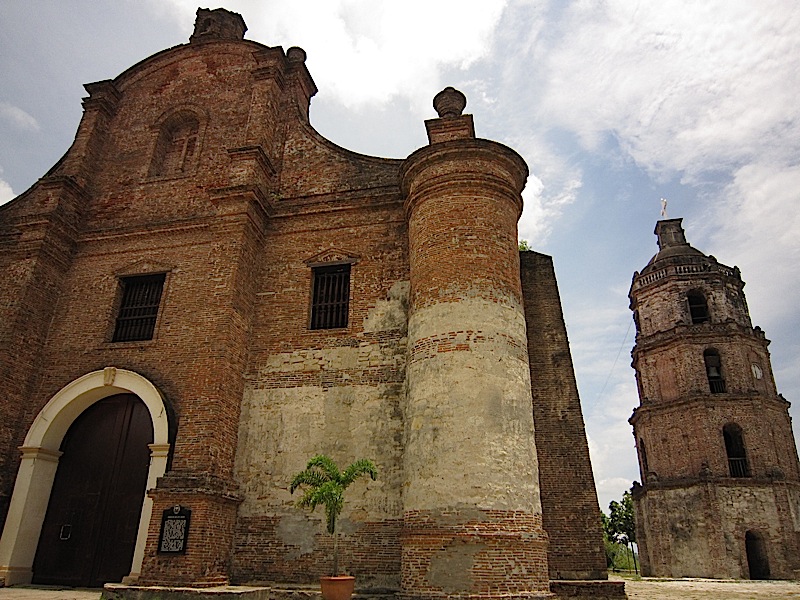 Leaving the province of La Union and continuing north, we enter the province of Ilocos Sur. Our first stop was the town of Santa Maria, about 355 road kilometers away from Manila, to visit the Church of Nuestra Señora de la Asuncion, one of the four Baroque Churches of the Philippines inscribed in the UNESCO World Heritage List in 1993. We arrived at noon, only to discover that the church is closed everyday from 11:30am to 2:00pm. So unfortunately, we did not get to see or take photos of the interiors. The church dates back to 1769 and the separate bell tower to 1810.
Leaving the province of La Union and continuing north, we enter the province of Ilocos Sur. Our first stop was the town of Santa Maria, about 355 road kilometers away from Manila, to visit the Church of Nuestra Señora de la Asuncion, one of the four Baroque Churches of the Philippines inscribed in the UNESCO World Heritage List in 1993. We arrived at noon, only to discover that the church is closed everyday from 11:30am to 2:00pm. So unfortunately, we did not get to see or take photos of the interiors. The church dates back to 1769 and the separate bell tower to 1810. 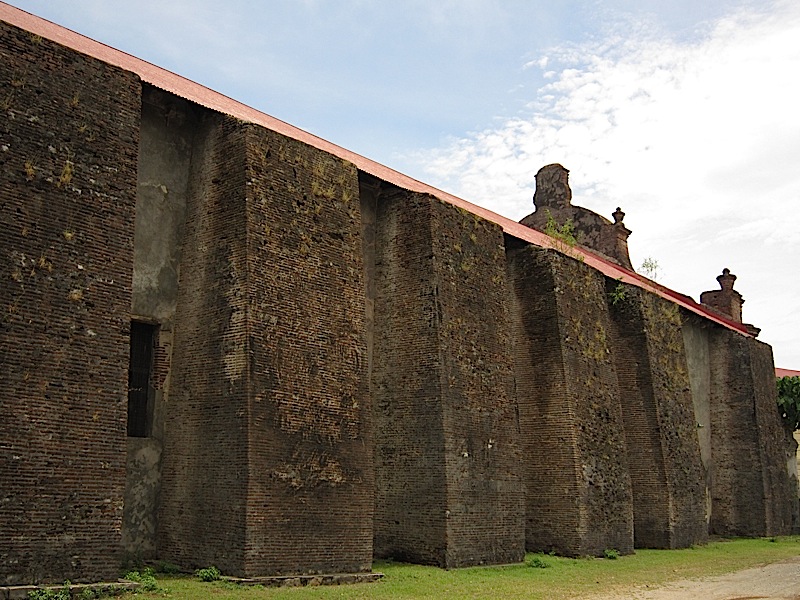 Amazingly, the church's buttresses are almost completely intact, surviving the three events (the 1892 earthquake, the 1898 Philippine Revolution, and the end of World War II in 1945) that damaged or destroyed most of the churches and other Spanish-era buildings in the region.
Amazingly, the church's buttresses are almost completely intact, surviving the three events (the 1892 earthquake, the 1898 Philippine Revolution, and the end of World War II in 1945) that damaged or destroyed most of the churches and other Spanish-era buildings in the region.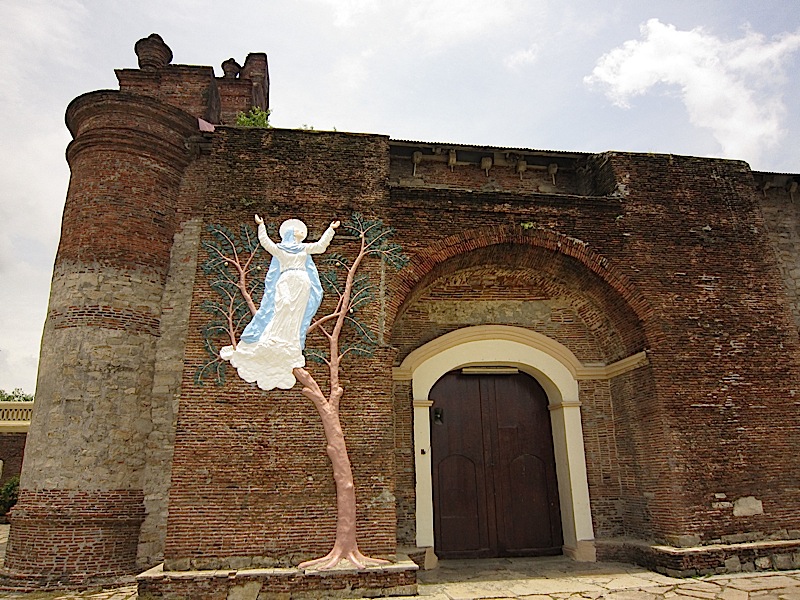 I'm not crazy about the plaster relief of Our Lady of the Ascension added to a wall beside one of the side entrances, but it does identify the patroness of the church, aside from breaking the monotony of the brick.
I'm not crazy about the plaster relief of Our Lady of the Ascension added to a wall beside one of the side entrances, but it does identify the patroness of the church, aside from breaking the monotony of the brick.  I was intrigued by the brick outline of a window and a door on one wall which was constructed of stone rather than brick.
I was intrigued by the brick outline of a window and a door on one wall which was constructed of stone rather than brick. The original rectory at the back of the church is still in use by a priest who obviously likes gardening. Isn't it so charming?
The original rectory at the back of the church is still in use by a priest who obviously likes gardening. Isn't it so charming? 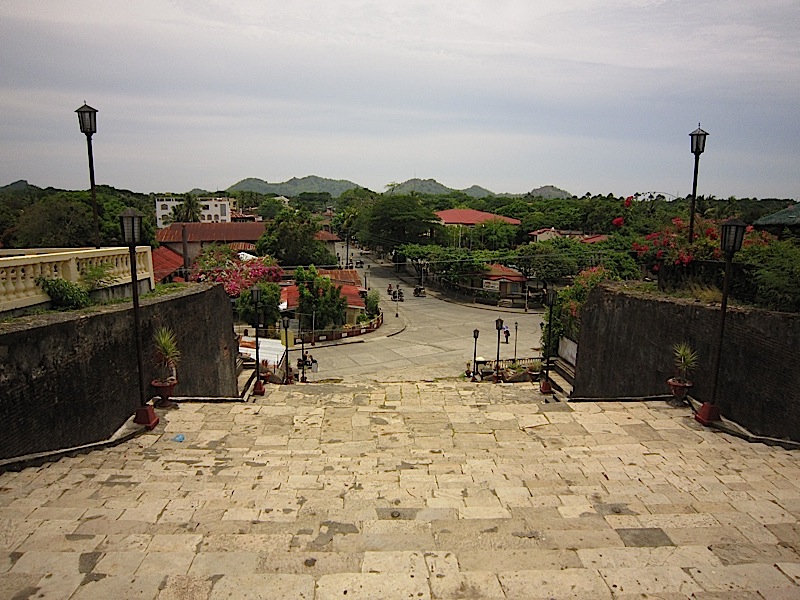 The Church of Nuestra Señora de la Asuncion stands on a hill surrounded by a defensive wall. Pedestrians have to climb these steps from the street but there is a narrow, winding road at the rear for those who have vehicles.
The Church of Nuestra Señora de la Asuncion stands on a hill surrounded by a defensive wall. Pedestrians have to climb these steps from the street but there is a narrow, winding road at the rear for those who have vehicles.  Another set of stairs leads down to an overgrown path which passes through a tunnel of trees. I would dearly love to know where that path leads—it looks like a lovely walk (but not in the middle of the day). LUZON ROAD TRIP SERIES #6
Another set of stairs leads down to an overgrown path which passes through a tunnel of trees. I would dearly love to know where that path leads—it looks like a lovely walk (but not in the middle of the day). LUZON ROAD TRIP SERIES #6
